Abstract
15 patients with Paget's bone disease were treated with varying schedules of porcine (3.8-157.5 MRCU/kg per wk) and/or salmon (1.5-210 MRCU/kg per wk) calcitonins over periods ranging from 4 to 24 months. All of the subjects experienced a striking decrease in serum alkaline phosphatase during the first 4 months of treatment. In six patients, however, resistance to these peptides was suggested by a subsequent elevation of alkaline phosphatase activity in spite of continued and augmented hormone administration. These rebounds in alkaline phosphatase levels correlated with the appearance of calcitonin-binding substances and neutralizing material in serum. Incubations of calcitonins-125I and sera from these six subjects resulted in the association of radioactivity with material whose behavior on chromatoelectrophoresis (6/6), sucrose density ultracentrifugation and immunoelectrophoresis (one subject) was identical with that of 7S immunoglobulin. Specific, reversible in vitro binding of salmon calcitonins-125I was observed in sera obtained from these patients 5 to 12 months after initiation of salmon calcitonin therapy. All six of these subjects' sera acquired the capacity to neutralize salmon calcitonin's hypocalcemic effect in rat bioassay. Neutralization titers correlated with maximal binding capacities, which ranged from 0.042 to 6.6 mg/liter of serum. Competitive displacement of calcitonins-125I from the sera of one patient treated with both porcine and salmon calcitonin indicated separate populations of antibodies to these hormones. In spite of return of disease activity comparable to baseline levels, 3/5 resistant subjects treated with salmon calcitonin failed to develop hypocalcemia after injection of 300-1000 MRCU of salmon calcitonin, but two of these patients developed hypocalcemia in response to the porcine hormone. The disappearance of total radioactivity from the circulation after intravenous administration of salmon calcitonin-125I was retarded and the amount of serum radioactivity precipitable in 50% (NH4)2SO4 greater in 3/3 resistant patients compared to control subjects. These observations on the incidence of significant titers of neutralizing antibodies to salmon (40%) and porcine (66%) calcitonins during their chronic (> 4 months) administration to man clearly indicate that an appraisal of this possibility be included in studies involving protracted use of these hormones.
Full text
PDF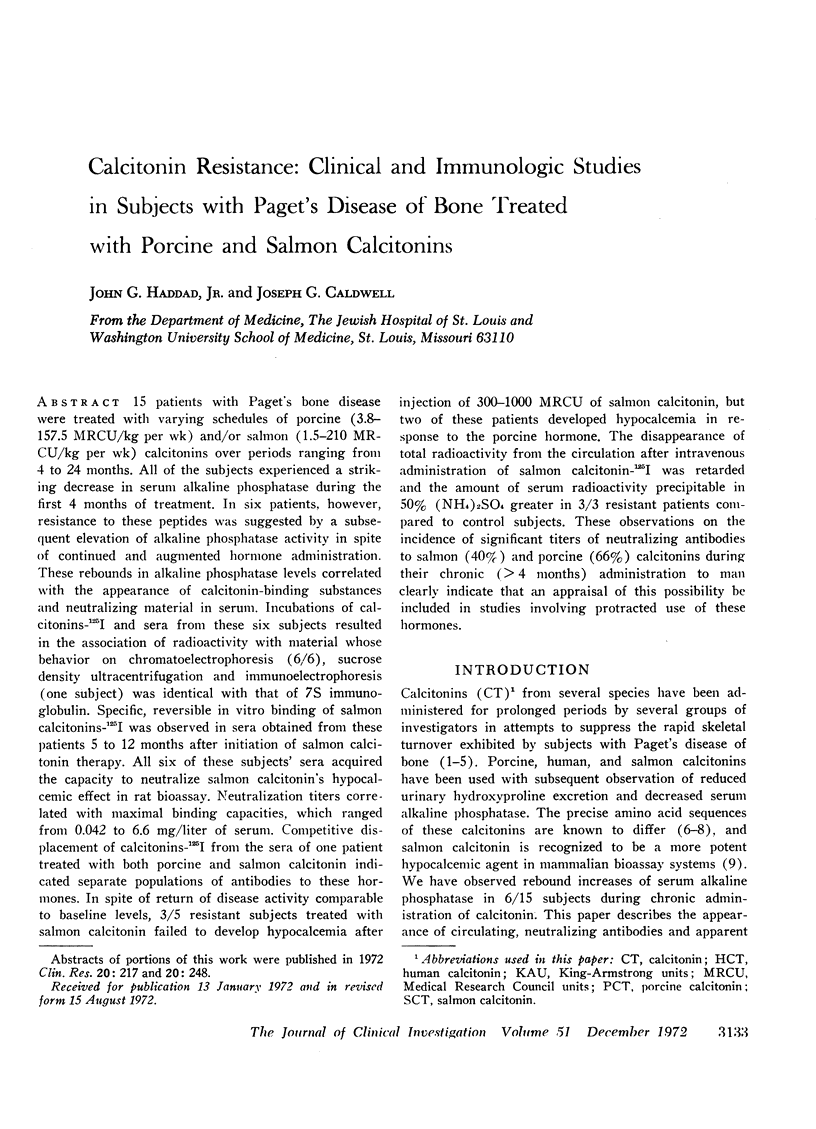
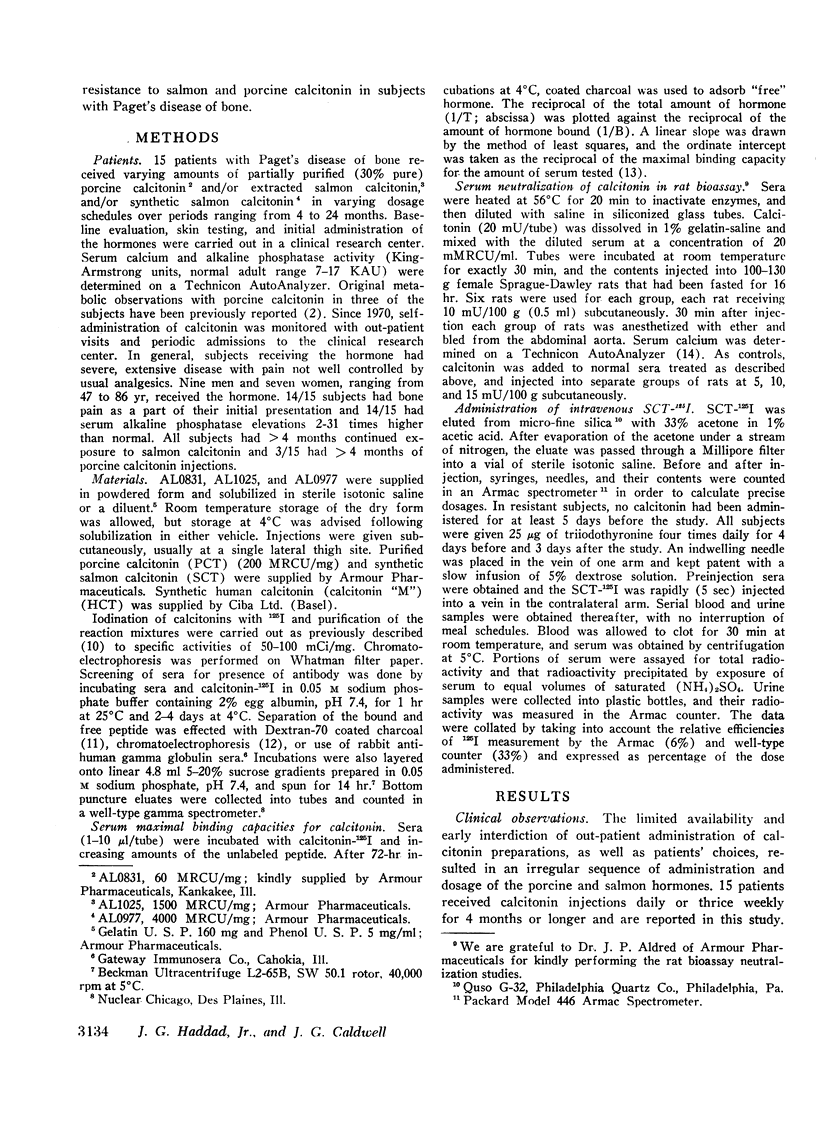
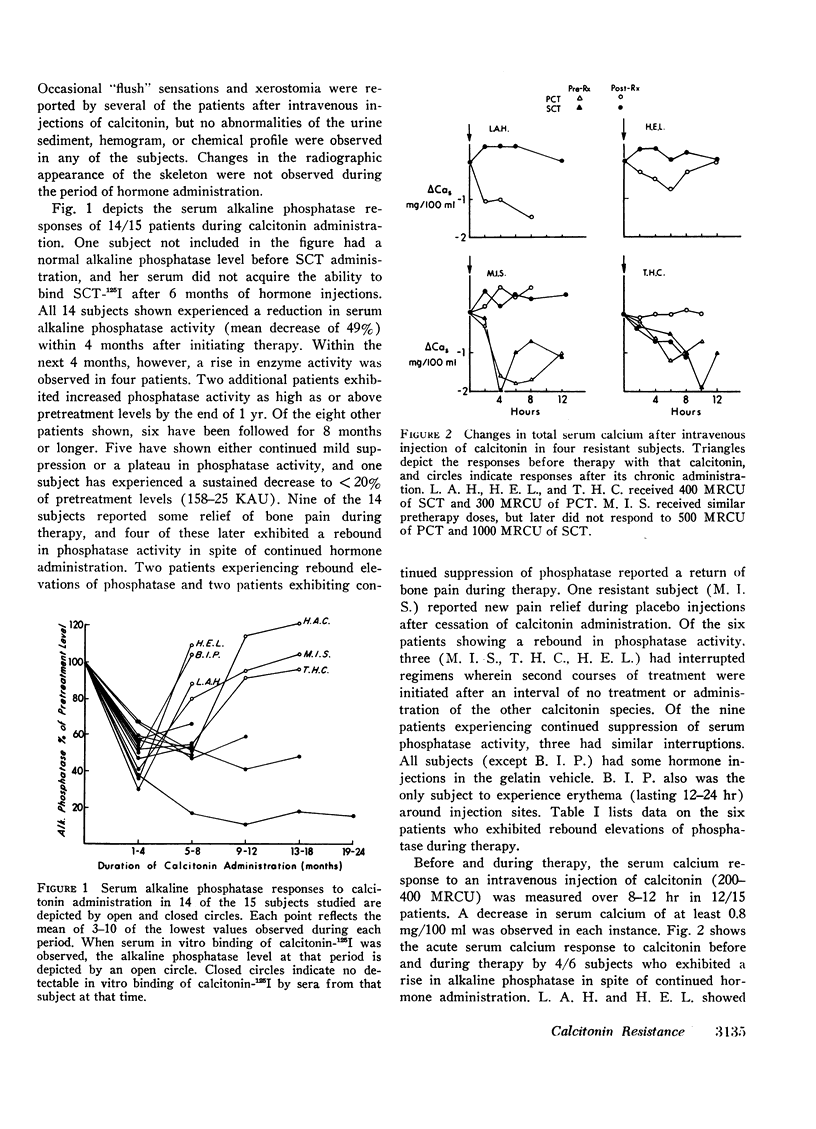
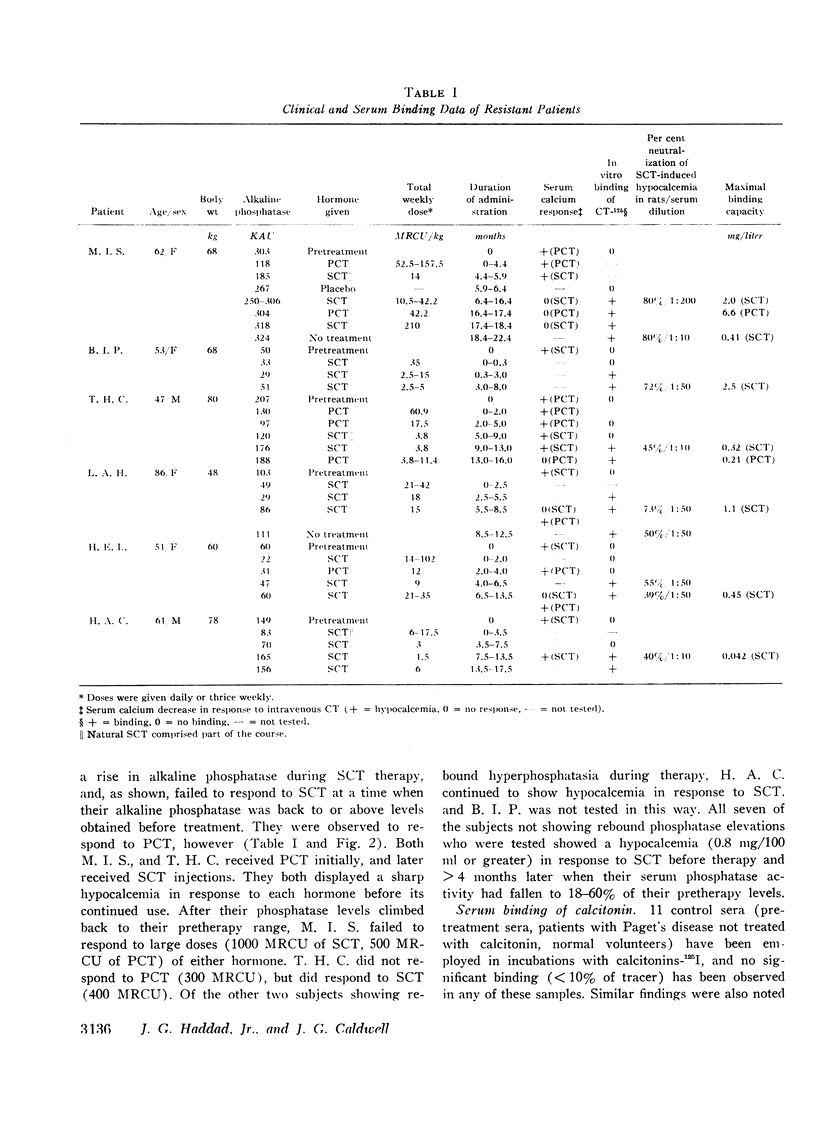
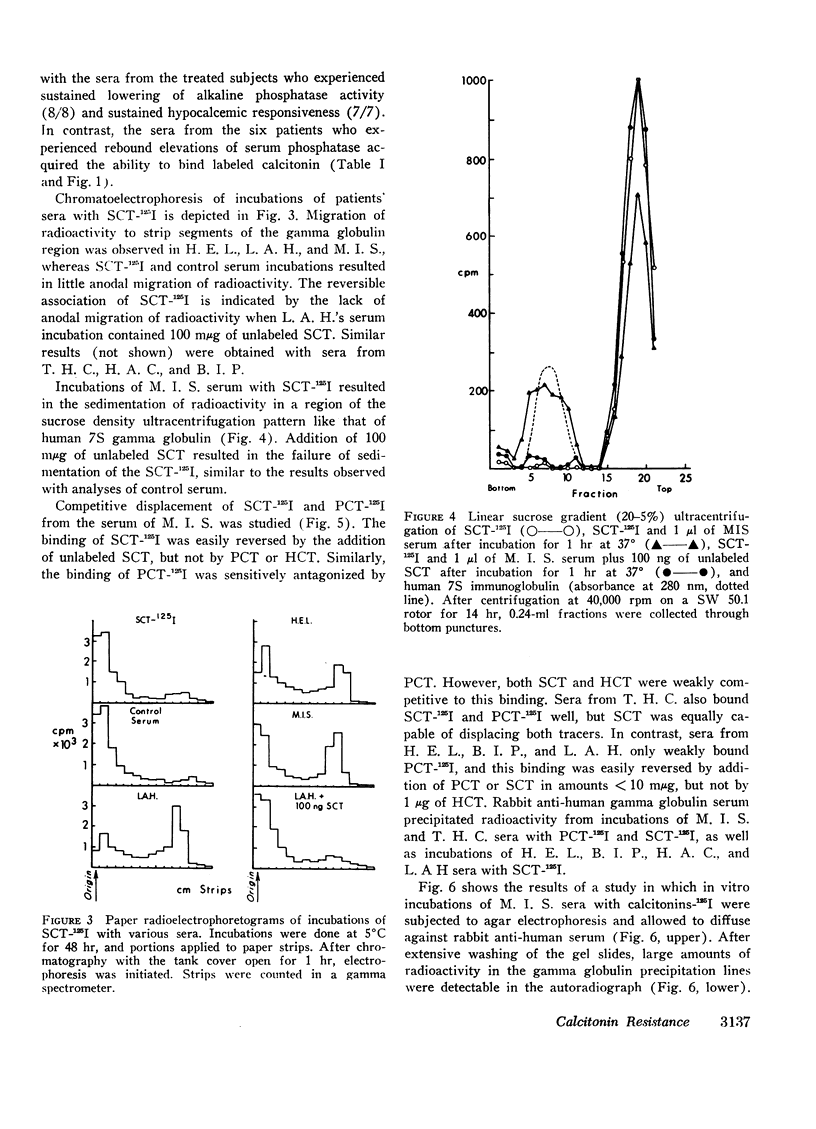
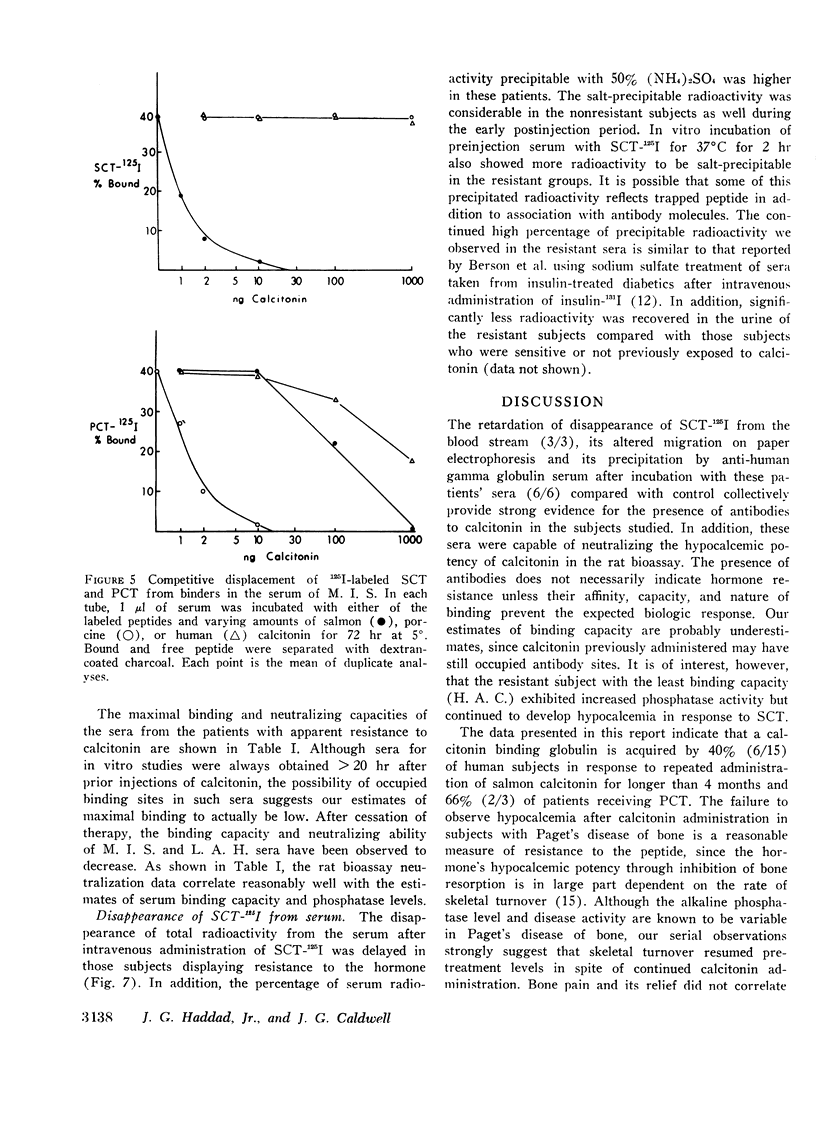


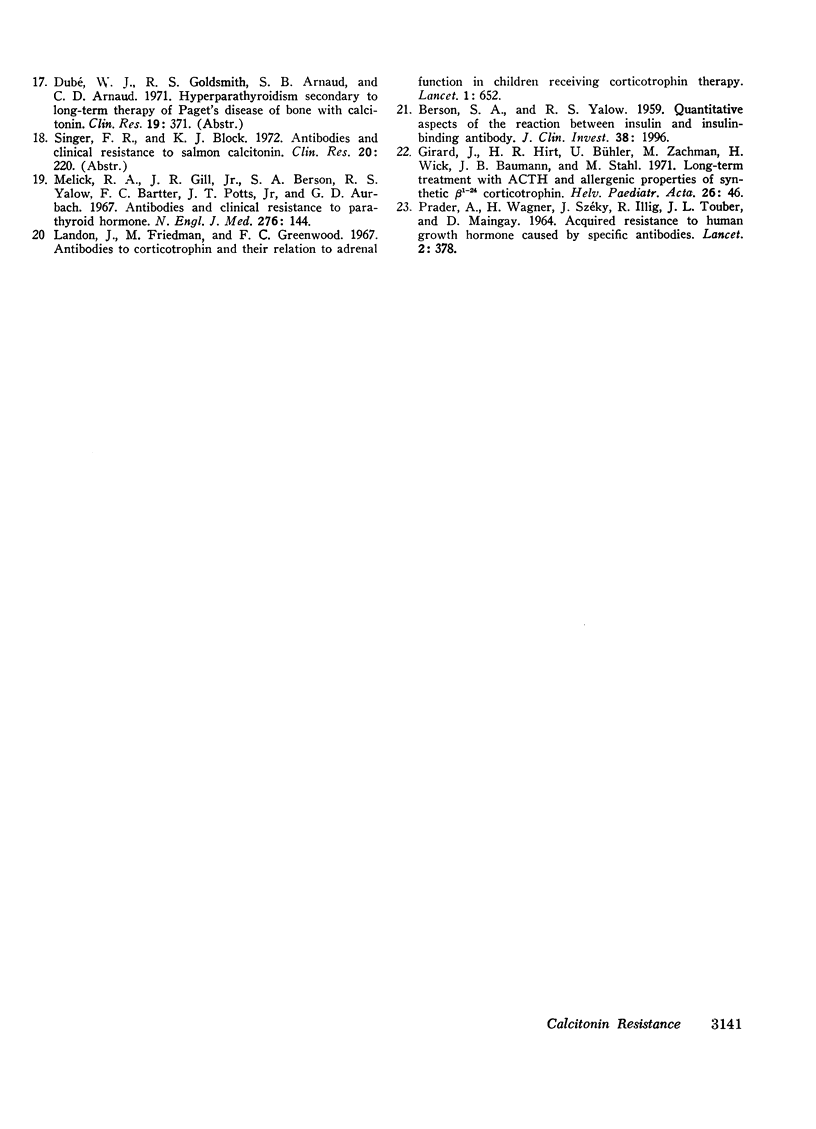
Images in this article
Selected References
These references are in PubMed. This may not be the complete list of references from this article.
- BERSON S. A., YALOW R. S., BAUMAN A., ROTHSCHILD M. A., NEWERLY K. Insulin-I131 metabolism in human subjects: demonstration of insulin binding globulin in the circulation of insulin treated subjects. J Clin Invest. 1956 Feb;35(2):170–190. doi: 10.1172/JCI103262. [DOI] [PMC free article] [PubMed] [Google Scholar]
- BERSON S. A., YALOW R. S. Quantitative aspects of the reaction between insulin and insulin-binding antibody. J Clin Invest. 1959 Nov;38:1996–2016. doi: 10.1172/JCI103979. [DOI] [PMC free article] [PubMed] [Google Scholar]
- Bell N. H., Avery S., Johnston C. C., Jr Effects of calcitonin in Paget's disease and polyostotic fibrous dysplasia. J Clin Endocrinol Metab. 1970 Sep;31(3):283–290. doi: 10.1210/jcem-31-3-283. [DOI] [PubMed] [Google Scholar]
- Bijvoet O. L., van der Sluys Veer J., Jansen A. P. Effects of calcitonin on patients with Paget's disease, thyrotoxicosis, or hypercalcaemia. Lancet. 1968 Apr 27;1(7548):876–881. doi: 10.1016/s0140-6736(68)90236-5. [DOI] [PubMed] [Google Scholar]
- Girard J., Hirt H. R., Bühler U., Zachmann M., Wick H., Baumann J. B., Stahl M. Long term treatment with ACTH and allergenic properties of synthetic beta-1-24 corticotrophin. Helv Paediatr Acta. 1971 Apr;26(1):46–55. [PubMed] [Google Scholar]
- Haddad J. G., Jr, Birge S. J., Avioli L. V. Effects of prolonged thyrocalcitonin administration on Paget's disease of bone. N Engl J Med. 1970 Sep 10;283(11):549–555. doi: 10.1056/NEJM197009102831101. [DOI] [PubMed] [Google Scholar]
- Herbert V., Lau K. S., Gottlieb C. W., Bleicher S. J. Coated charcoal immunoassay of insulin. J Clin Endocrinol Metab. 1965 Oct;25(10):1375–1384. doi: 10.1210/jcem-25-10-1375. [DOI] [PubMed] [Google Scholar]
- Hirsch P. F., Munson P. L. Thyrocalcitonin. Physiol Rev. 1969 Jul;49(3):548–622. doi: 10.1152/physrev.1969.49.3.548. [DOI] [PubMed] [Google Scholar]
- Keutmann H. T., Parsons J. A., Potts J. T., Jr, Schlueter R. J. Isolation and chemical properties of two calcitonins from salmon ultimobranchial glands. J Biol Chem. 1970 Mar 25;245(6):1491–1496. [PubMed] [Google Scholar]
- Landon J., Friedman M., Greenwood F. C. Antibodies to corticotrophin and their relation to adrenal function in children receiving corticotrophin therapy. Lancet. 1967 Mar 25;1(7491):652–655. doi: 10.1016/s0140-6736(67)92544-5. [DOI] [PubMed] [Google Scholar]
- Melick R. A., Gill J. R., Jr, Berson S. A., Yalow R. S., Bartter F. C., Potts J. T., Jr, Aurbach G. D. Antibodies and clinical resistance to parathyroid hormone. N Engl J Med. 1967 Jan 19;276(3):144–147. doi: 10.1056/NEJM196701192760304. [DOI] [PubMed] [Google Scholar]
- Neher R., Riniker B., Zuber H., Rittel W., Kahnt F. W. Thyrocalcitonin. II. Struktur von alpha-Thyrocalcitonin. Helv Chim Acta. 1968 May 31;51(4):917–924. doi: 10.1002/hlca.660510430. [DOI] [PubMed] [Google Scholar]
- Niall H. D., Keutmann H. T., Copp D. H., Potts J. T., Jr Amino acid sequence of salmon ultimobranchial calcitonin. Proc Natl Acad Sci U S A. 1969 Oct;64(2):771–778. doi: 10.1073/pnas.64.2.771. [DOI] [PMC free article] [PubMed] [Google Scholar]
- PARKER M. L., MARIZ I. K., DAUGHADAY W. H. RESISTANCE TO HUMAN GROWTH HORMONE IN PITUITARY DWARFISM: CLINICAL AND IMMUNOLOGIC STUDIES. J Clin Endocrinol Metab. 1964 Oct;24:997–1004. doi: 10.1210/jcem-24-10-997. [DOI] [PubMed] [Google Scholar]
- PRADER A., WAGNER H., SZEKY J., ILLIG R., TOUBER J. L., MAINGAY D. ACQUIRED RESISTANCE TO HUMAN GROWTH HORMONE CAUSED BY SPECIFIC ANTIBODIES. Lancet. 1964 Aug 22;2(7356):378–382. doi: 10.1016/s0140-6736(64)90390-3. [DOI] [PubMed] [Google Scholar]
- Potts J. T., Jr, Niall H. D., Keutmann H. T., Brewer H. B., Jr, Deftos L. J. The amino acid sequence of porcine thyrocalcitonin. Proc Natl Acad Sci U S A. 1968 Apr;59(4):1321–1328. doi: 10.1073/pnas.59.4.1321. [DOI] [PMC free article] [PubMed] [Google Scholar]
- Shai F., Baker R. K., Wallach S. The clinical and metabolic effects of porcine calcitonin on Paget's disease of bone. J Clin Invest. 1971 Sep;50(9):1927–1940. doi: 10.1172/JCI106685. [DOI] [PMC free article] [PubMed] [Google Scholar]
- Tashjian A. H., Jr Immunoassay of thyrocalcitonin. I. The method and its serological specificity. Endocrinology. 1969 Jan;84(1):140–148. doi: 10.1210/endo-84-1-140. [DOI] [PubMed] [Google Scholar]
- Woodhouse N. J., Bordier P., Fisher M., Joplin G. F., Reiner M., Kalu D. N., Foster G. V., MacIntyre I. Human calcitonin in the treatment of Paget's bone disease. Lancet. 1971 Jun 5;1(7710):1139–1143. doi: 10.1016/s0140-6736(71)91657-6. [DOI] [PubMed] [Google Scholar]



